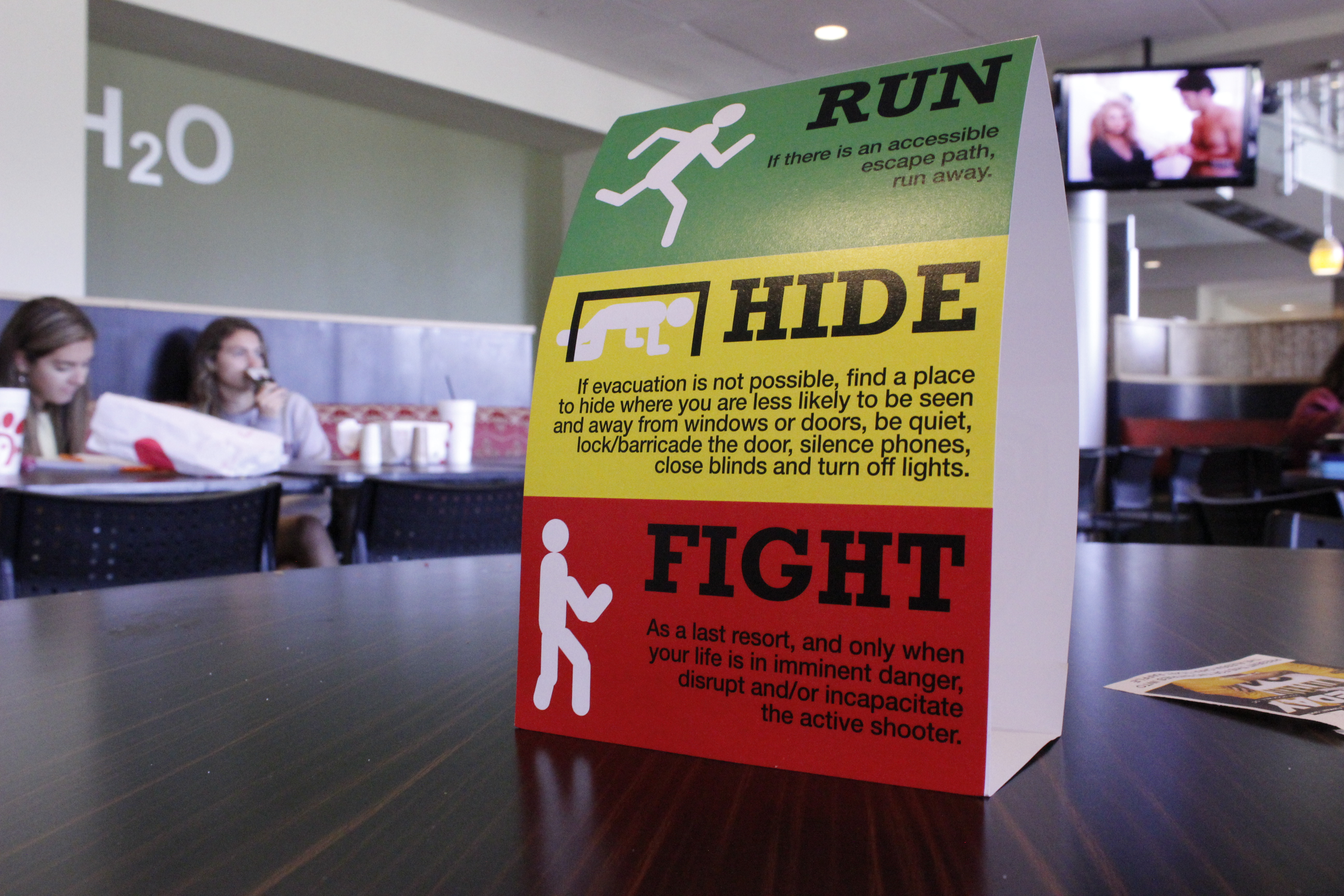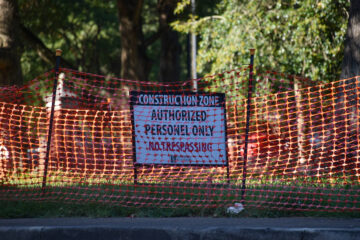Safety on campus has long been an important issue for students. Many college students are living away from home for the first time, and this comes along with its own set of challenges and—occasionally—dangers.
Shootings at institutions of higher learning are one of the biggest potential dangers, though they are not a new phenomenon. One of the deadliest school shootings in U.S. history occurred at the University of Texas in 1966. However in the wake of mass shootings at Virginia Tech, Umpqua Community College and University of North Carolina-Charlotte, discussions about and research into shootings at universities have increased.
In the face of ongoing senseless violence on campuses, the police department for Winthrop University is taking campus safety very seriously.
On Sept. 16, WUPD Lt. Charles Yearta presented a lecture and slideshow in Dina’s Place on dealing with an “active shooter” situation. The presentation was part of Winthrop’s inaugural Safety Week and was held along with other events focusing on safety around Winthrop’s campus.
Yearta, a Winthrop graduate, described the topic of the presentation as “very important” and said that “the only benefit that comes out of this, really, is if y’all have any questions.” Yearta began his presentation by first looking into what the term “active shooter” means.
“Ironically, with the federal government you may think this is a straightforward thing—it’s not. The federal government regularly revises what they define as an ‘active shooter,’” Yearta said. “This is the current definition that we’re working under. This is the one that the FBI and Homeland Security finally got together and agreed on and said ‘this works:’ ‘It is an individual actively engaged in killing or attempting to kill numerous people in a confined and populated area.’”
While some mass attacks on campuses do not use firearms, such as the 2016 vehicle-ramming/stabbing attack at The Ohio State University, Yearta said that in “most cases” the perpetrator of the attack “will use a firearm.”
Yearta delved into the data on school shootings and said that according to the FBI, there have been a total of 75 active shooter incidents in schools between 2000 and December 2018. Yearta said that 15 of the attacks were carried out at “institutions of higher education” which includes both two-year and four-year schools.
“Out of those shootings, 163 victims have been killed, 270 have been wounded, for a total of 437,” Yearta said. “Two-hundred-and-ninety of those victims were students at some level.”
For those who find themselves in an active shooting, it may feel like an eternity but Yearta said that “statistically” most of the shootings are “over in five minutes or less.”
“From start to finish, five minutes is all we’re talking about,” Yearta said.
Yearta said that following the shootings at Columbine High School and Virginia Tech, the federal government advised schools to create “behavioral intervention teams.” Yearta said that Winthrop has one of these teams, made up of members and representatives from campus police, campus healthcare, the dean of students office and residence life. He said that these groups deal with the student population the most and they can work together to identify students who may need to have extra attention paid to them, including intervention if need be.
Yearta went on to break down the three courses of action that can be taken should one find themselves in an active shooter situation: run, hide, fight. Winthrop has been placing placards around campus featuring the ‘run, hide, fight’ information in recent months.
The ‘run, hide, fight’ method comes from the U.S. Department of Homeland Security. DHS recommends identifying multiple exits in each building one enters to make escaping easier, securing the door to a room should one decide to hide and only attempting to take down a shooter as a final resort.
Yearta emphasized that everyone should have the mindset of figuring out “escape routes” for buildings that they work in or have classes in.
At the conclusion of Yearta’s presentation, he opened the floor up to questions. One woman in attendance raised concerns over the fact that some buildings have numerous entrances that can be accessed, either due to being unlocked or having keycard swipes that can be accessed by most people with a school ID of some kind. She said that some other schools have a main entrance that is staffed by a security guard. She said that it “makes sense to have a security guard that monitors who’s going in and out of the building” and said that she hopes that Winthrop is looking into implementing a similar system. Some of the buildings have to be left unlocked due to Winthrop being a public university, though Yearta said that “it’s one of those situations where we’re tangled with what we know is going to happen and providing a safe, secure environment” for students while still remaining open to the public.
Should students see or hear something from someone on campus that gives them cause for concern that a potentially violent event might take place, Yearta said that students can “come to campus police” to report an incident that they find troubling. Yearta said that WUPD will “do an internal report” that is “funnelled” to the “behavioral intervention team” who will review the report. He said that students also have the option of reporting incidents or concerns to the office of the dean of students or health and counseling services.
“It doesn’t matter how it gets reported, it’ll get funnelled into that same network,” Yearta said. “The most important thing though is that it gets reported.”
This story was sourced from The Palmetto Report which can be found at palmettoreport.wordpress.com
Photo: Tate Walden/ The Johnsonian




